Temple Tonic – Serene Parshvanath
Joydip Sur
“Let not anyone hurt life but cherish the life of another as his own, for ahimsa is the highest religion”, reads one of the marble inscriptions at the Parshvanath Temple. The Parshvanath Temple was built in 1867 and named after the 23rd Thirthankara – Lord Parshvanath. He was born a prince to King Asvasena and Queen Vama of Varanasi in 877 B.C. At the age of 30 he renounced the world and became an ascetic.
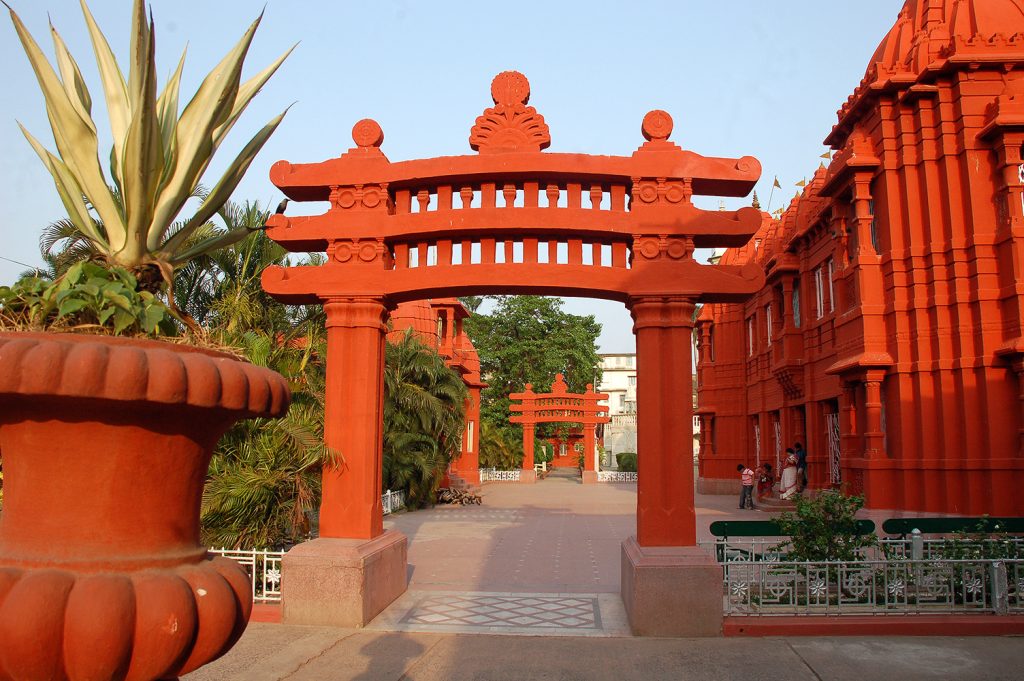
He practised austerity for 83 days and on the 84th day achieved enlightenment. Lord Parshvanath preached the doctrine of ahimsa and truth for 70 years. He went on to live for 100 years and much to the dismay of his followers breathed his last during a summit at Mount Sammeta also known as Parsnath Hills.
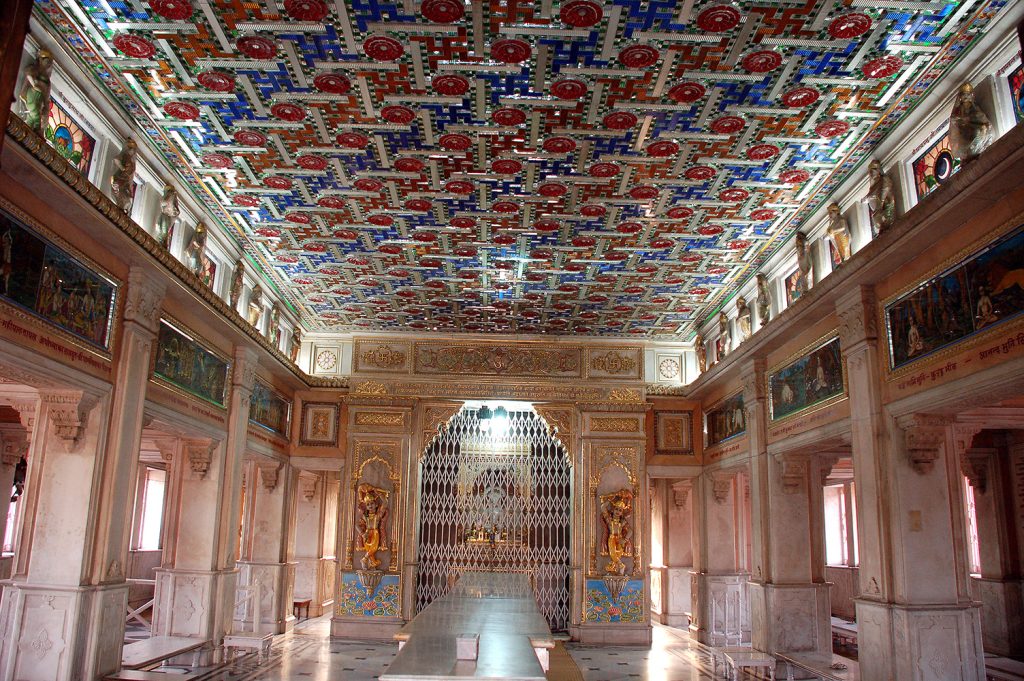
The architecture is of predominantly Nagara style. The ornamental pillars and sculptures have been inspired from several old Jain temples and caves. It has been built extensively with red chunar stones and marble. The beauty of the temple is enhanced by the splendid artistry that consists of mirror, coloured stones and glass inlaid ceiling with its mesmerising designs. Scenes from the life of Lord Parshvanath have been depicted on coloured glass and can be seen displayed high up on both the side walls in the main prayer hall.
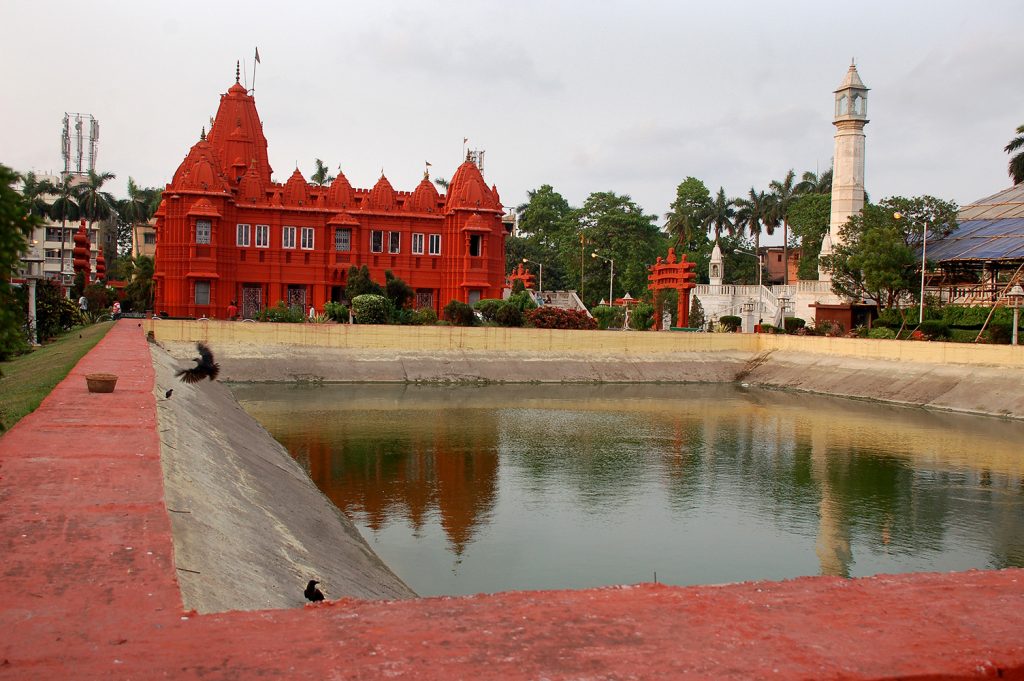
Numerous statues of mythological characters are on display inside the temple. An extensive use of the colour scheme, especially gold is distinct. Holy inscriptions from religious books have been engraved on marble.
The temple is surrounded by a beautiful garden and a unique 81 feet high Mana Stambha (pillar) built of white marble. The reflection of the temple in the adjoining tank makes for a picturesque kaleidoscope.
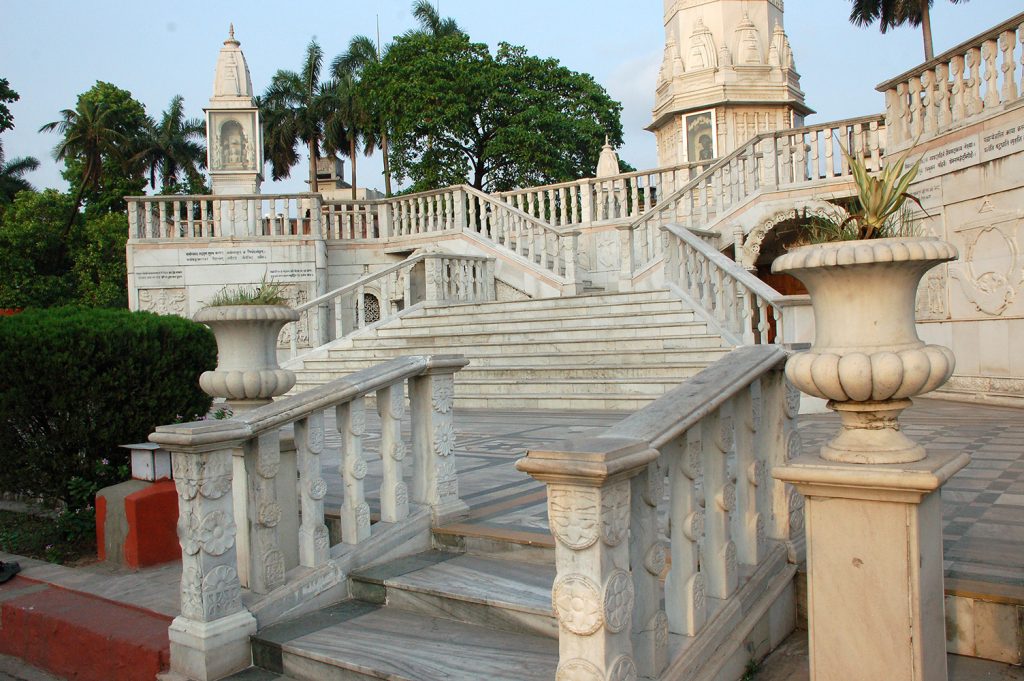
The Parshvanath Temple is sometimes also referred to as the Sree Digambar Jain Temple. The name ‘Digambar’ literally means ‘clothed in the quarters of the sky’ and the digambar monks are often referred to as ‘sky-clad.’ Nudity is one the main doctrinal difference between the two sects. Apart from this, the philosophy and ethics which form the foundation of Jainism are almost the same for both the Shvetambaras and the Digambaras. The five major vows of ahimsa (non-violence), satya (truth), asteya (non-stealing), aparigraha (non-possession) and brahmacharya (celibacy) are central to their doctrine.
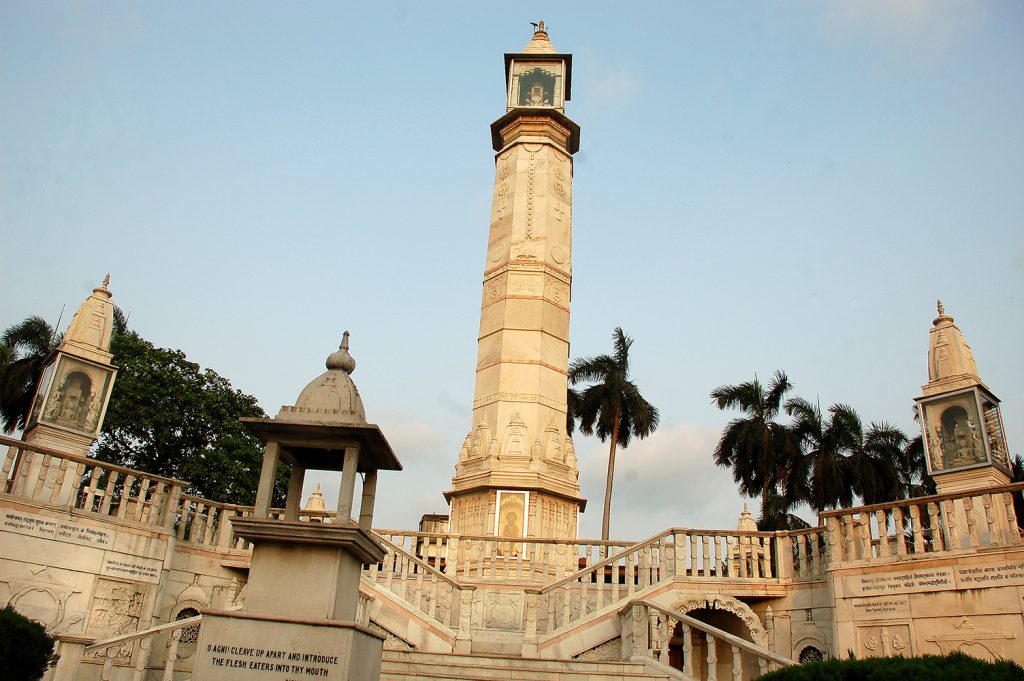
The Parshvanath Temple was renovated by a renowned architect Mr Brown in 1914. In the very same year, the main idol of Tirthankara Parshvanath was installed in the temple. The hood of a snake is shown as protecting the Lord from sun and rain. The Yaksha Dharanendra and the Yakshi Padmavati are seen flanking him.
There is an interesting anecdote about the Yakshas. Once when Prince Parshvanath was walking through a forest he met Mahipala, a turncoat. Mahipala had surrounded himself with by five logs and lit a fire as if to show that he was praying. Avdhignan (inner knowledge) told Parsvanath a couple of snakes were trapped in there.
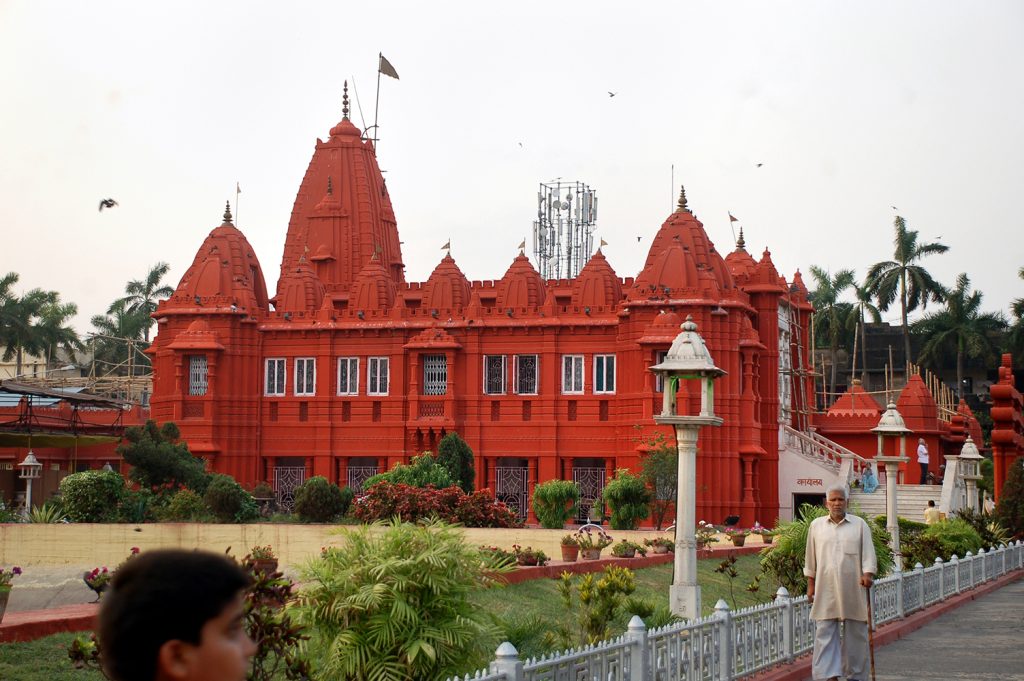
He quickly warned Mahipala but instead of trying to save them, the man was enraged and denied the presence of any snake. Parshavanath gently pulled out the logs, separated them. He then saw the half charred bodies of the snakes and recited the Navkar Mantra, a prayer, for the duo before they died. It is said the snakes were reincarnated into Yaksha Dharanendra and Yakshi Padmavati.
The spectacular Rath Yatra of Thirthankara Parshvanath adorned with a colourful procession of several bajan mandalies (group of singers who sing religious hymns) and jankhis arrives here on the day of Kartik Purnima each year. The ceremony is observed with great pomp and show.
If you are looking for a calming effect in the sweltering summer heat, the temple is just the place for you.
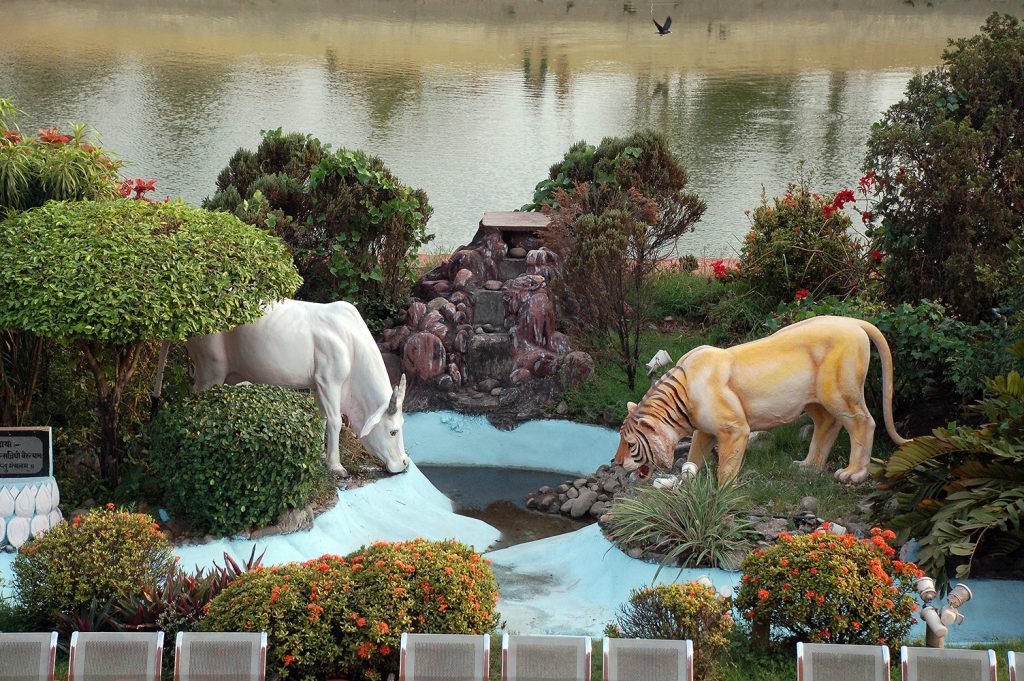
Fast Facts:
Name: Parshvanath Temple
Nearest Metro Station: Belgachia
Photography: Allowed
Parking: Limited space available for parking outside the temple premises
Note: On certain days, there is a reservation on entry for people belonging to other faiths. It is therefore advisable to call at the number above before visiting the temple.
